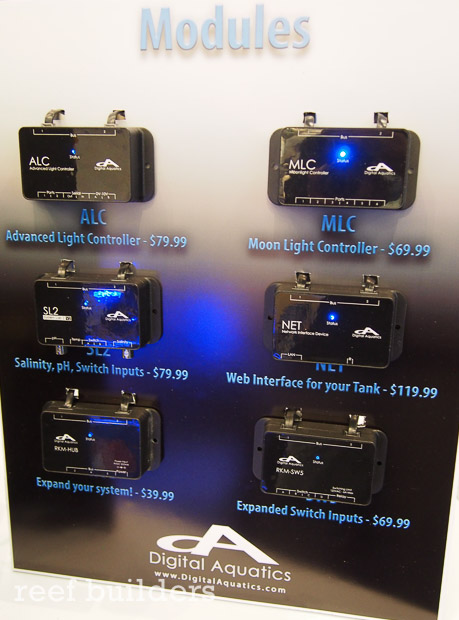Digital Aquatics, the once mighty company of aquarium controllers released a new digital tank controller called Archon. The new controller will be their first to use cloud-based data to support managing your reef aquarium. Archon is the system Digital Aquatics hopes to get back into it again—as it was once a top player producing equipment for saltwater tank management for several years.
Archon is expected to ship later this year (October) we are told and has support for wireless (finally) and wired connections that are built into the back. Additionally, 2 PH or ORP ports, 4 PWM ports, 4 BUS communication ports along with 2 0-5v/0-10v selectable ports. Display units those that are commonly bundled with aquarium controllers were popular for many years but with the advent of other screens in our daily lives (mobile devices) we have less use for aquarium display units. The new strategy that Digital Aquatics is using with Archon is display-less units with the option to download software in either iOS or Android flavors allowing to use your mobile phone or tablet without the need for a costly display unit.

However, it might be said the cloud technology has rapidly propelled ahead in the past 12 months with Neptune Systems taking the lead in aquarium controlling software and rapidly coming out with new and innovative products. There will be a very large uphill battle that Digital Aquatics will need to conquer. They did have a very large install base with their popular Reef Keeper, Reef Keeper 2 and Reef Keeper Elite units throughout North America and abroad. Interestingly, Digital Aquatics was acquired by Dynon Instruments a relatively small unheard of company not to be confused with Dynon Avionics.
- Wireless and wired networking built in
- 2x ph/ORP selectable ports
- 2x 0-5v/0-10v selectable ports
- 4x PWM ports
- 4x BUS (communication) ports
- 6v power input (maybe a battery backup?)
- 1x USBport (unit ships with a 4GB micro USB flash drive)
- 1x PowerBar 8(8 plug power controller with metal case
- 2x 0-5v/0-10v selectable ports




